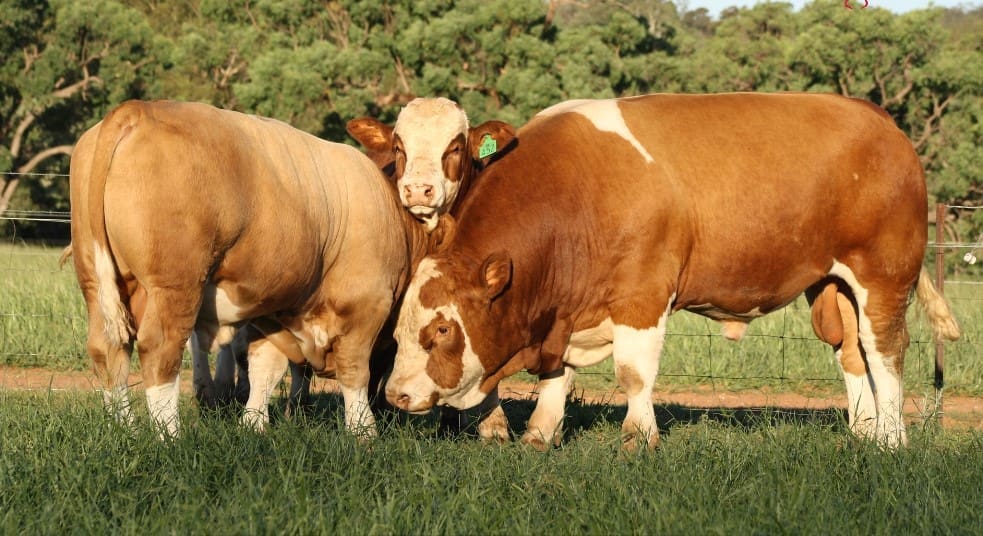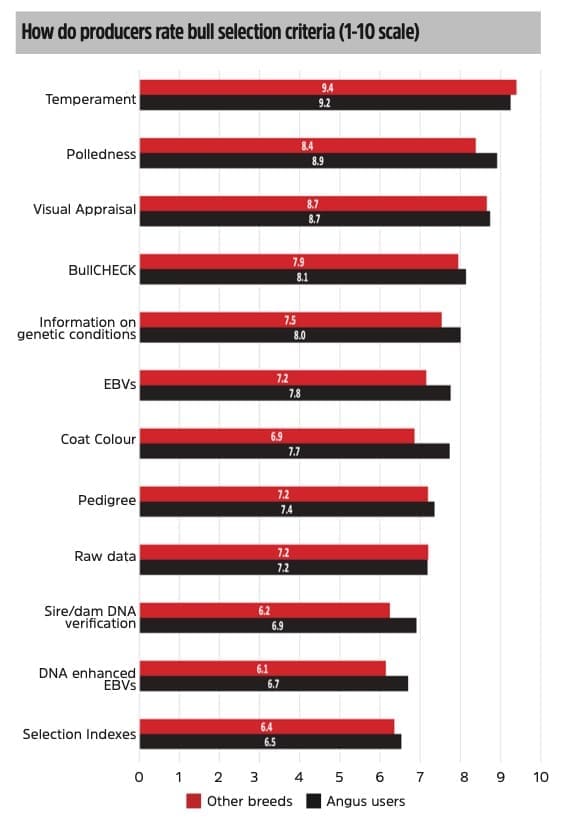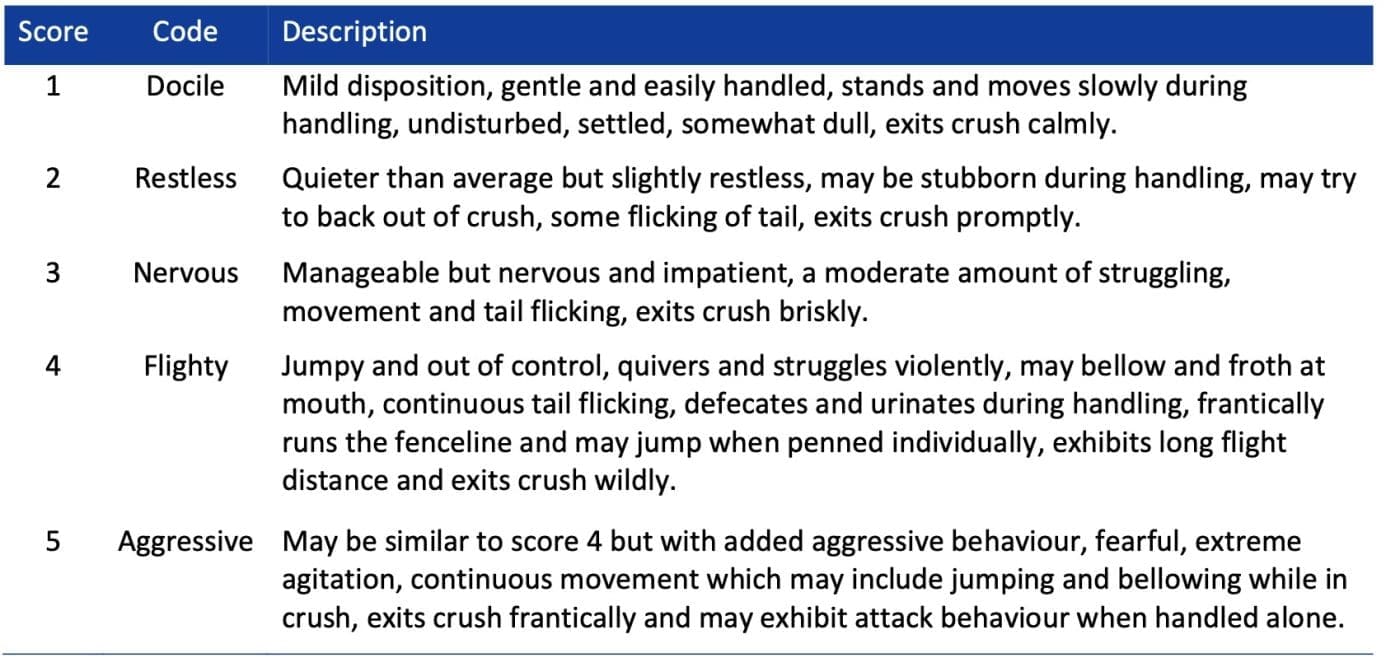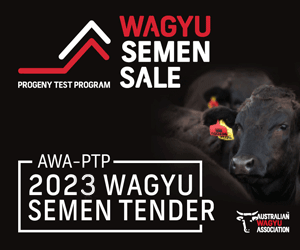
I WAS recently contacted by a bull breeder with several concerns around the issue of docility and selection for temperament.
Temperament is consistently the most important trait producers consider when selecting a new bull, surveys show.
The Australian Beef Breeding Insights survey was a co-funded project backed by the MLA Donor Company and Angus Australia which ran in May and June 2019.
As can be seen in this chart, in terms of producers’ selection criteria, temperament was the most important selection criteria across all breed types.

Rating of Selection Criteria used by Producers (Source: Beef Breeding Insights – Angus Australia 2020)
With this in mind, I was asked a series of questions by this bull breeder around the collection of data on temperament. In particular, he asked if his business was potentially being placed at legal risk by the subjective scores on docility of bulls contributing to risks for those people who then purchase his cattle.
While these are valid questions, they also highlight several areas where bull breeders and commercial cattle producers may not truly understand the role of data collection for traits, how EBVs are calculated, and the expression of a trait in progeny.
To respond to these concerns, it’s worth breaking the question down into several smaller areas and addressing each clearly.
The first is around data collection. Breedplan EBVs rely on producers to collect raw data. There are very clear guidelines around the data to be collected for each trait, as well as when that data should be collected. In the case of docility, BreedPlan recommends that these scores be collected between 60 and 400 days of age. Ideally scores should be collected at weaning.
The reason for this timing comes down to the expression of a trait. As most producers are aware, temperament is strongly influenced by handling experiences. These can be either positive or negative, so ideally recording scores before too much human interaction has occurred is the goal.
Breedplan recommendations for scoring docility are to record an animal on a scale of 1 (Docile) to 5 (Aggressive), as described below:

Animals can be assessed either in a yard – by being separated and held alone in a corner for 30 seconds or through a race and held in a crush for 30 seconds. It is important that there is some variation in the scores assigned in order to assess the variation associated with the group.
It is natural that what some breeders consider nervous (Score 3) other breeders may see that animal as Flighty (Score 4). So there will be a degree of subjectivity associated with these scores.
However, it is important to recognise these raw scores are not final. Docility scores are submitted to BreedPlan for analysis, which includes data from known pedigrees, recorded progeny, linked herds, and other data such as genetic traits which may have correlations with the trait being analysed.
The Docility EBV published for a bull is therefore the result of a comprehensive analysis, of which the data collected by one breeder is but one part. In the cases of new sires, or where linked data is limited, the accuracy of this EBV will be lower and this accuracy should be published in a sale catalogue along with the EBV.
Role of Docility EBVs in a herd
The second factor to recognise is the role of Docility EBVs in a herd.
 Fundamentally, the EBV helps indicate the percentages of progeny expected to have acceptable temperament within a herd. This is an important clarification that many breeders and producers overlook.
Fundamentally, the EBV helps indicate the percentages of progeny expected to have acceptable temperament within a herd. This is an important clarification that many breeders and producers overlook.
Docility EBVs don’t mean that there may not be individual animals within a herd with poor temperaments. It is still possible, however the effect over a herd when using bulls with higher EBVs for docility means an increase in the number of progeny expressing more acceptable levels of temperament.
The final question associated with the potential risk of injury from a bull with favorable Docility EBVs also comes back to understanding what EBVs describe.
The best description is that EBVs belong to the progeny, not to the bull. The behaviour and temperament of a bull is the result of his genetics and environment. In the case of environment, that can be his handling and previous experiences.
There really is an immediate concern in this case, which is safety around the individual bull and the longer term concern around his genetics as described by his EBVs.
There is little value in a bull with poor individual temperament, even if he possesses favorable EBVs for docility. As an individual he should be removed for the safety of handlers and others.
Two-pronged approach
Ultimately, selection for temperament should be a two-pronged approach.
Individuals that display unacceptable temperament should be identified and removed from breeding programs.
Longer-term, selection for docility, using bulls that have higher accuracy EBVs will assist in transitioning a herd towards the range a producer feels to be acceptable.
For bull breeders, their role in assessing and recording the docility of the animals they wish to sell as bulls will contribute to improvements across breeds. In this case, the data collected forms part of a bigger picture and should be seen as valuable inclusions rather than a risk for the program.
 Alastair Rayner is the Principal of RaynerAg, an agricultural advisory service based in NSW. RaynerAg is affiliated with BJA Stock & Station Agents. He regularly lists and sell cattle for clients as well attending bull sales to support client purchases. Alastair provides pre-sale selections and classifications for seedstock producers in NSW, Qld and Victoria. He can be contacted here or through his website www.raynerag.com.au
Alastair Rayner is the Principal of RaynerAg, an agricultural advisory service based in NSW. RaynerAg is affiliated with BJA Stock & Station Agents. He regularly lists and sell cattle for clients as well attending bull sales to support client purchases. Alastair provides pre-sale selections and classifications for seedstock producers in NSW, Qld and Victoria. He can be contacted here or through his website www.raynerag.com.au

We find flight speed testing an excellent tool for measuring temperament:
Objective, heritable (0.34) and repeatable (0.63).